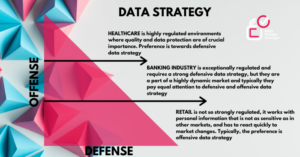Mental health and safety is becoming increasingly vital in today’s workplaces, as organizations recognize the profound impact of mental well-being on overall productivity and employee satisfaction. In this evolving landscape, understanding the interplay between mental health and workplace safety is essential for fostering a supportive environment that nurtures both physical and psychological wellness.
By identifying signs of mental health issues and implementing effective strategies, businesses can create a culture where employees feel valued and supported. From assessing psychological hazards to integrating mental health initiatives into business operations, it’s clear that prioritizing mental health leads to a more resilient workforce.
Mental Health Awareness
Mental health is a crucial aspect of overall well-being, especially in the workplace. It influences productivity, employee satisfaction, and organizational culture. Recognizing the importance of mental health can lead to improved job performance and a more positive work environment. Understanding the signs of mental health issues among employees is essential for timely intervention. Common indicators include changes in behavior, decreased productivity, withdrawal from colleagues, and increased absenteeism.
By identifying these signs early, employers can take proactive steps to support their workforce.
Strategies for Promoting Mental Wellness

Promoting mental wellness in business settings involves implementing effective strategies. Here are several key approaches:
- Employee Assistance Programs (EAPs): Implementing EAPs provides employees access to confidential counseling services.
- Work-Life Balance Policies: Encouraging flexible work hours and remote work options helps employees manage their personal and professional lives.
- Training and Workshops: Offering regular mental health training and workshops can raise awareness and equip employees with coping strategies.
- Open Communication Channels: Fostering a culture of open dialogue about mental health can reduce stigma and encourage employees to seek help.
Workplace Safety and Mental Well-being
The relationship between workplace safety and mental health is pivotal. A safe work environment promotes not only physical well-being but also psychological safety, enhancing overall employee morale. To assess psychological hazards in the workplace, companies should conduct regular risk assessments, which should include employee feedback mechanisms and anonymous surveys. These assessments help identify stressors and areas for improvement.
Implementing Safety Measures for Mental Health
Implementing safety measures that support mental health can be approached through various means:
- Risk Management Plans: Develop plans that address potential psychological risks in the workplace.
- Regular Training on Safety Practices: Ensure that all employees are familiar with safety protocols and feel empowered to report concerns.
- Creating Safe Spaces: Designate areas within the workplace where employees can take breaks and decompress.
Business Innovation in Mental Health
Innovation in mental health practices can significantly enhance employee engagement and productivity. Companies that prioritize mental health often see a return on investment through reduced turnover and improved employee loyalty.Examples of companies successfully integrating mental health programs include tech giants like Google, which offers comprehensive mental health benefits, and Unilever, known for its mental wellness initiatives.
Framework for Assessing Mental Health Innovations
To measure the impact of mental health innovations, businesses should establish a framework that includes:
- Data Collection: Regularly gather data on employee satisfaction and mental health indicators.
- Feedback Mechanisms: Create opportunities for employees to provide feedback on mental health initiatives.
- Performance Metrics: Track performance metrics before and after implementing new mental health programs.
International Business and Mental Health Practices
Mental health practices vary significantly across cultures, impacting how businesses operate internationally. Understanding these differences is crucial for multinational companies.Mental health policies in international business are essential for fostering a supportive environment for diverse teams. Companies must adapt their approaches to align with local customs and practices regarding mental health.
Supporting Global Teams Inclusively
Global teams can support mental health inclusively by:
- Cultural Sensitivity Training: Providing training that educates employees about different cultural attitudes towards mental health.
- Building Inclusive Policies: Crafting policies that consider the varying needs and expectations of all employees.
- Encouraging Peer Support Programs: Facilitating programs that connect employees across borders to share experiences and support one another.
Business Management and Employee Support
Effective management techniques are vital for fostering a supportive environment. Leaders play a crucial role in prioritizing mental health initiatives within their organizations.Management styles that focus on empathy and understanding can significantly enhance employee morale.
Resources for Managers to Assist Employees
Managers should utilize various resources to assist employees struggling with mental health, including:
- Mental Health First Aid Training: Investing in training that equips managers to recognize and address mental health issues.
- Resource Centers: Providing access to information and services related to mental health.
- Regular Check-ins: Encouraging managers to conduct regular one-on-one meetings to discuss employees’ well-being.
Marketing Mental Health Initiatives
Creating a marketing strategy for mental health awareness campaigns is essential for ensuring employee engagement. Effective messaging can resonate with employees and foster a culture of openness.
Effective Messaging Examples
Examples of messaging that resonates with employees include:
- Personal Testimonials: Sharing stories from employees who have benefited from mental health initiatives.
- Visual Campaigns: Utilizing posters and digital content that promote mental health awareness and resources.
- Workshops and Events: Organizing events that promote mental health awareness and provide resources for employees.
Business Networking and Mental Health
Networking techniques that facilitate mental health support are crucial for building a supportive professional community. Creating opportunities for professionals to discuss mental health openly can lead to reduced stigma and increased understanding.
Building a Supportive Professional Community
To foster a supportive community, organizations can:
- Host Networking Events: Organize events focused on mental health topics to encourage open dialogue.
- Establish Support Groups: Create groups where employees can share their experiences and support each other.
- Leverage Online Platforms: Use online forums or social media to create spaces where mental health discussions can occur.
Risk Management in Mental Health
Neglecting mental health in businesses poses potential risks that can adversely affect employee well-being and productivity.
Designing a Risk Management Plan
A comprehensive risk management plan should address mental health concerns by:
- Identifying Risks: Assess potential psychological hazards and their impact on employees.
- Developing Prevention Strategies: Create strategies to mitigate identified risks, such as stress management programs.
- Monitoring and Evaluation: Regularly evaluate the effectiveness of risk management strategies in promoting mental well-being.
Sales Management and Employee Well-being
Managing sales teams with mental health in mind is essential for maintaining high morale and productivity. High-pressure environments can significantly affect mental health, making supportive management practices crucial.
Creating a Supportive Feedback System
To support the mental well-being of sales employees, organizations can implement:
- Regular Feedback Sessions: Schedule consistent times for feedback to ensure employees feel heard.
- Recognition Programs: Recognize and reward employees for their achievements to boost morale.
- Access to Mental Health Resources: Provide employees with information and access to mental health services.
Strategic Planning for Mental Health Integration
Integrating mental health into business operations requires a strategic approach. Organizations must align their mental health initiatives with overall business goals to ensure effectiveness.
Metrics for Measuring Effectiveness

Identifying metrics for measuring the effectiveness of mental health strategies includes:
- Employee Satisfaction Surveys: Conducting surveys to assess the impact of mental health initiatives on employee satisfaction.
- Retention Rates: Monitoring turnover rates as an indicator of employee well-being.
- Productivity Metrics: Evaluating changes in productivity levels before and after implementing mental health programs.
Team Building and Mental Health
Designing team-building activities that promote mental health awareness can enhance team dynamics and foster a supportive environment.
Successful Team-Building Exercises
Examples of successful team-building exercises focused on mental well-being include:
- Wellness Retreats: Organizing retreats that focus on relaxation and mental health education.
- Mindfulness Workshops: Including mindfulness practices in team-building activities to enhance focus and reduce stress.
- Collaborative Projects: Encouraging team members to work together on projects that promote team bonding.
Workplace Communication and Mental Health
Effective communication strategies play a vital role in discussing mental health in the workplace. Establishing a culture of open dialogue can help employees feel more comfortable sharing their concerns.
Barriers to Open Communication
Identifying barriers to open communication about mental health includes:
- Stigma and Misunderstanding: Addressing common misconceptions about mental health that may prevent employees from speaking up.
- Lack of Resources: Ensuring availability of resources that provide guidance on mental health discussions.
- Hierarchical Structures: Encouraging a flattened hierarchy where all employees feel safe to voice their concerns.
Small Business Challenges in Mental Health Support
Small businesses face unique challenges when it comes to supporting mental health initiatives. Limited resources and staff can hinder comprehensive mental health support.
Solutions for Small Businesses
To navigate these challenges, small businesses can:
- Leverage Community Resources: Collaborate with local organizations that provide mental health resources.
- Implement Flexible Work Policies: Introduce policies that promote work-life balance.
- Encourage Open Dialogue: Foster a workplace culture that supports open discussions about mental health.
Employee Training on Mental Health
Creating a training program focused on mental health education for employees is essential for fostering awareness and support within the organization.
Training Resources for Workplace Mental Health
Identifying training resources for enhancing workplace mental health literacy includes:
- Online Courses: Offering access to online mental health courses for all employees.
- Workshops Facilitated by Experts: Bringing in mental health professionals to conduct workshops.
- Resource Libraries: Creating a library of materials on mental health topics accessible to employees.
Closing Notes
In conclusion, recognizing the significance of mental health and safety is crucial for creating a thriving workplace culture. By adopting comprehensive strategies that encompass awareness, support, and innovation, businesses can enhance employee well-being and drive overall success. The journey towards a mentally healthy workplace is both challenging and rewarding, paving the way for a brighter future for both employees and organizations alike.
FAQ Guide
What are the signs of mental health issues in employees?
Common signs include changes in behavior, decreased productivity, withdrawal from colleagues, and increased absenteeism.
How can businesses promote mental health in the workplace?
Businesses can promote mental health by offering resources, implementing training programs, and fostering open communication.
Why is workplace safety linked to mental health?
Workplace safety greatly influences mental health; a safe environment reduces stress and anxiety, leading to better overall well-being.
What role does leadership play in mental health initiatives?
Leadership plays a vital role by prioritizing mental health, setting a positive example, and supporting initiatives that promote mental wellness.
What resources are available for small businesses to support mental health?
Small businesses can access community resources, employee assistance programs, and mental health training sessions to support their employees.




